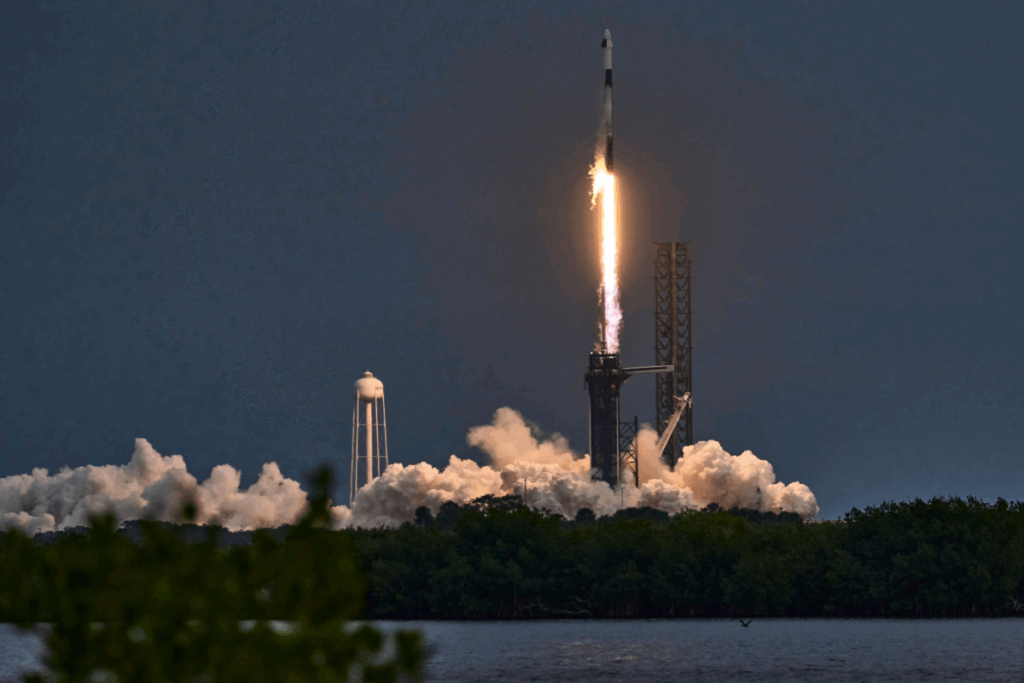Falcon 9 Lights Up Southern California Sky
A SpaceX Falcon 9 rocket lifted off from Vandenberg Space Force Base on Sunday evening, streaking across the skies of southern California as it carried 28 new Starlink satellites into low Earth orbit. The launch took place at 10:04 p.m. EDT (7:04 p.m. local time) and marked another step in the expansion of SpaceX’s growing broadband constellation.
Within minutes, the Falcon 9 successfully reached orbit. The upper stage was scheduled to deploy its payload of Starlink satellites—designated Group 11-20—about an hour after liftoff.
Booster 1063 Achieves 28th Flight
The mission also highlighted the remarkable durability of Booster 1063, the Falcon 9 first stage that carried out this launch. After separating from the upper stage, the booster performed a precise landing on the droneship “Of Course I Still Love You”, stationed in the Pacific Ocean.
This was the 28th mission for Booster 1063, making it one of SpaceX’s most flown and most reliable boosters. Its service record includes a wide range of missions such as the Sentinel-6 Michael Freilich satellite, NASA’s DART asteroid mission, multiple NROL national security flights, and no fewer than 18 previous Starlink launches.
Expanding the Starlink Megaconstellation
The addition of 28 satellites brings the active Starlink network to more than 8,500 operational units. Starlink is designed to provide high-speed broadband internet access around the globe, particularly in remote or underserved regions.
With this launch, SpaceX has continued to solidify its dominance in the commercial space sector. The company has used its Falcon 9 rockets to steadily deploy Starlink in batches, building one of the largest and most ambitious satellite systems in history.
Record-Breaking Launch Cadence
This mission marked SpaceX’s 124th Falcon 9 launch of the year, underscoring the company’s relentless pace. Since the first Falcon 9 flight in 2010, the rocket has now completed 542 missions, the vast majority of them successful.
The consistent cadence has been fueled in part by SpaceX’s strategy of booster reusability, which has dramatically lowered launch costs and allowed rockets like Booster 1063 to fly dozens of times.
With Starlink continuing to expand and new missions on the horizon—including commercial payloads, national security launches, and support for NASA programs—SpaceX shows no sign of slowing down. Each successful mission further cements the Falcon 9 as a workhorse of modern spaceflight.


